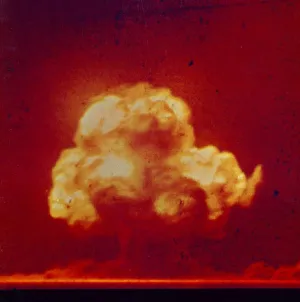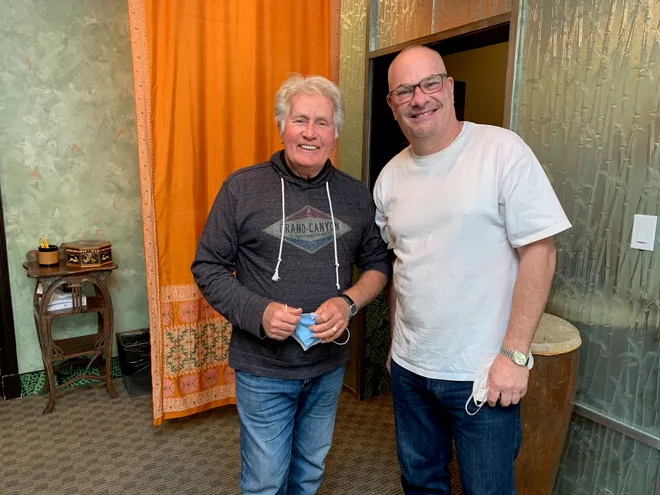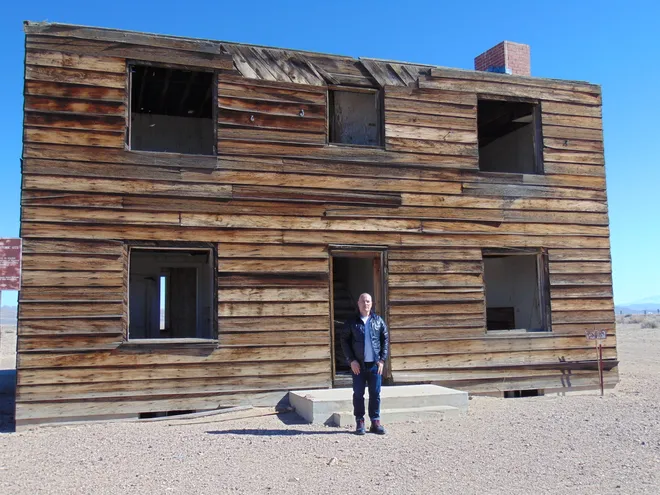Oscar nods honor 'Oppenheimer,' but what about Americans still suffering from nuke tests?
There’s a signature moment in the blockbuster film "Oppenheimer." Scientists are on edge; they are about to detonate the world’s first nuclear weapon. A man begins a countdown, and the most respected scientific and engineering minds place side bets on whether the earth will survive this initial detonation. Then there’s a flash and a deep boom.
After a pregnant pause, an anxious celebration ensues. Handshakes all around. Hooray for J. Robert Oppenheimer and the lads!
In American cinema we celebrate icons and moments in time. We rarely ponder the consequence after our popcorn tub is empty. A consequence of that 21-kiloton nuclear test at Trinity in the remote New Mexico desert was the unrestricted drift of toxic radiation that blanketed the ground below.
Now "Oppenheimer" is up for 13 Oscar nominations and is expected to sweep the awards ceremony Sunday. But lost among the festivities is the historic representation of those directly impacted by nuclear weapons testing – including a significant number of Native American communities unaware of the nearby Manhattan Project. To this day, the radiative fallout continues to besiege New Mexico families with generational DNA destruction and higher rates of cancer, leukemia and other illnesses.

928 nuclear weapons tests on American soil 1951-92
The world’s first three atomic bombs were detonated just 24 days part in 1945. But, six years after Oppenheimer’s test and the two bombs dropped on Japan, the United States began an onslaught of nuclear weapons tests on a swathe of sacred Shoshone land near Las Vegas the size of Rhode Island.
The Nevada Test Site would see 928 atomic blasts from 1951 until 1992, with many of the detonations featuring much higher yields than the bombs dropped in New Mexico, Hiroshima and Nagasaki. Each shot would excoriate the skin of the desert earth and seed clouds of radioactive fallout for the winds to carry over land and communities below.
Based on scientific studies of radioactive exposure emitted by weapons testing and uranium industry employment, Congress in 1990 passed the Radiation Exposure Compensation Act, though testing continued for a couple more years. RECA provides funds to those who can prove they developed an illness due to their proximity to the testing, but it's deeply flawed at its roots. Not only is the amount offered to "downwinders" insulting – a mere $50,000 “lump sum” – it also only covers a handful of remote counties in Nevada, Utah and Arizona.
New Mexico was inexplicably left out of the program.
Even so, RECA was a start. And though it was heading for extension and expansion, a recent amendment to the National Defense Authorization Act dropped the compensation expansion. The Radiation Exposure Compensation Act is now scheduled to sunset this June.
Oppenheimer's nuclear fallout:Atomic legacy destroyed the world of 'downwinders'
John Wayne, downwind filming a movie, died from cancer
This sentence on its own is astonishing: 928 full-scale nuclear weapons detonations on American soil.
When my co-director Douglas Brian Miller and I embarked on this journey of discovery for our documentary film "Downwind," we wanted to understand exactly who was impacted then and now by the nearly 1,000 atomic “experiments.”
Threat is real:Our nuclear weapons are much more powerful than Oppenheimer's atomic bomb
In our research, we learned that the U.S. government disgracefully referred to the first downwinders, those in the path of radioactive fallout, as a "low-use segment of the population."
Using a lens metaphor, we initially focused on St. George, Utah, 135 miles east of the Nevada Test Site and a city that had experienced tremendously high levels of leukemia and cancer rates.
The exquisitely picturesque red cliffs and canyons around St. George also served as locations for Hollywood films, including Howard Hughes’ epic "The Conqueror,"which starred John Wayne as Genghis Khan. Many of those who worked on the movie died of complications related to cancer, including Wayne.
In our documentary, Mark Sennet, co-writer of a People magazine article on the 1956 movie's cast and crew, said that "out of 220 people, if our estimates are correct, 110 people died of cancer."
We viewed John Wayne as a metaphor for iconic America: brazen, yet vulnerable and not immune to the exposure of radioactive dust while shooting the film.
Our film "Downwind," narrated by Martin Sheen, features Michael Douglas, Lewis Black and Patrick Wayne, son of John Wayne. Matthew Modine – who ironically plays engineer Vannevar Bush in "Oppenheimer" – is our executive producer.

"Downwind" exposes a tragic, largely forgotten and unforgivable chapter of U.S. history and the ongoing health consequences for Americans and global citizens, addressing the current state of the downwinders, the hopeful expansion of RECA and the continued tenacity of heroic activists who won't be stopped in their pursuit of government accountability and humanitarian justice.
Despite a ban on nuclear testing, the Nevada Test Site, now renamed the Nevada National Security Site, remains operational. Some politicians even support the resumption of nuclear testing.
After several years of requests and following a background check, last March I was given permission to visit the site, arranged by the National Atomic Testing Museum in Las Vegas. A security team temporarily confiscated my camera, iPhone and even my Apple Watch before I embarked on a day-long tour, past sun-warped bleachers where scientists once observed detonations, to the pock-marked earth dotted with gigantic craters that sit scarred by the power of atomic weapons dropped from towers, canons and balloons.
I was surprised by the buzz of classified activity still happening there: Scientists, engineers and anti-terrorist teams continue to poke around the arid soil, among the stretching Joshua Trees.

The film "Oppenheimer" will be celebrated as a cinematic masterpiece, as it should be. But what about the people in the wake of Oppenheimer and nuclear testing? What about the repercussions for marginalized communities left to collect the detritus from history and glorified by Hollywood?
I hope when people watch "Oppenheimer," they will consider the connective tissue and ramifications of the full story. How many atomic tests is too many? That is up for public debate. But let us remember: We all live downwind.
Mark Shapiro is producer and co-director of "Downwind." Distributed by Gravitas Ventures, "Downwind" is available to stream on Peacock along with "Oppenheimer."
Disclaimer: The copyright of this article belongs to the original author. Reposting this article is solely for the purpose of information dissemination and does not constitute any investment advice. If there is any infringement, please contact us immediately. We will make corrections or deletions as necessary. Thank you.







